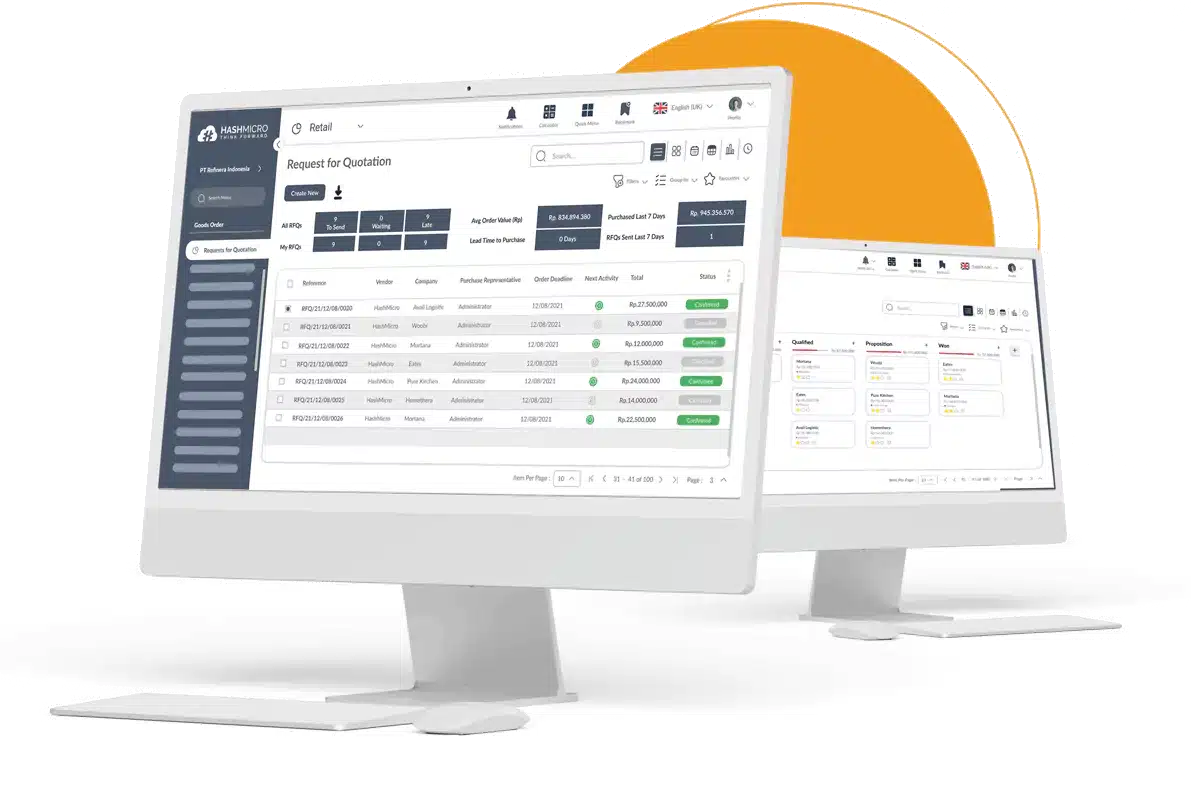So you’ve conquered the retail market in the Philippines—your stores are saan-saan na! But here’s the catch: customer feedback reveals inconsistency across your retail store, from service quality to product offerings.
This difference can make customers trust you less and hurt your brand’s image. Each branch reflecting a different standard is a recipe for lost sales and diminished customer loyalty. How do you ensure uniform excellence across all locations?
Address these inconsistencies head-on. Standardize, streamline, and secure the sustained success of your retail empire across the Philippines. Let’s dive in and learn how to make every location your best branch!
Key Takeaways
|
Table of Contents
Challenges in Managing Multiple Stores
Managing multiple retail stores presents unique challenges that can test even the most seasoned business owners. These obstacles require strategic planning and smart execution to ensure consistent store performance across all locations.
Some of those that you need to be aware of are:
- Inconsistent Customer Experience: Without standardized processes, customers might face different service levels at each store, affecting their overall perception of the brand.
- Complex Inventory Management: Keeping track of inventory across several locations can become a logistical nightmare without the right systems in place.
- Communication Barriers: Ensuring clear and consistent communication between headquarters and each store is crucial but challenging, especially with a growing number of locations.
- Staff Training and Management: Maintaining the same quality of staff training and performance across all stores requires a robust training system and effective management.
By addressing these challenges head-on, businesses can enhance operational efficiency and create a seamless customer experience across all their retail locations. This approach boosts customer satisfaction and strengthens the brand’s reputation, driving long-term success.
Also read: 7 Ways to Reduce Operating Expenses in Retail
6 Strategy You Could Implement in Your Business
Now, to manage your retail stores in different places well, using these six strategies will really help smooth out operations and improve how everything works. Let’s start:
1. Implement Standard Procedures Across All Locations
Ensure smooth operations in your stores from Manila to Bacolod by standardizing operational procedures. Distribute this manual to every store manager and conduct training sessions to ensure everyone understands and follows the guidelines.
Having the same rules for staff work hours, customer interactions and returns across all locations not only saves time and money but also ensures every customer has a consistently good experience. Also, consider implementing an integrated retail ERP software that enhances your ability to manage operations effortlessly.
2. Hire Competent and Professional Staff
Implement a rigorous hiring process that includes skill assessments and behavioural interviews to ensure candidates align with your company’s values and service standards. Choose people you can trust to represent your brand well in different places.
Make sure all your employees are trained well and act professionally. Regular training helps improve their skills, especially those who talk to customers directly. If organizing training feels overwhelming, you can try using professional services software, which can make it easier by systematically improving how your employees perform.

3. Foster Robust Communication Among Teams
Effective multi-location retail management hinges on strong inter-team communication. Set up regular video calls and team meetings to discuss updates and issues. Create a shared online workspace where everyone can post updates and access information anytime.
That way, all team members stay informed and aligned with the company’s goals. Utilizing cloud-based ERP technology enables seamless team coordination by allowing access to shared documents and data in real-time, reducing miscommunication and errors.
4. Centralize Sales Data Management
Handling sales data separately for each store can cause problems. If you put all sales information in one system, your reports will be complete and up-to-date. Train your staff on how to enter data correctly and consistently into the system.
Regularly review the data for accuracy and conduct monthly sales reviews to identify trends, challenges, and opportunities for growth. This helps you understand how your sales are doing and how your teams are performing, which is very important for making good plans.
5. Automate Inventory Management
Conduct physical stock checks regularly to validate the data in the system. Set up alerts for low stock levels to ensure you reorder products before they run out. Review inventory turnover rates to optimize stock levels and reduce carrying costs.
Managing stock in many locations across the Philippines can be tough. An automated system that tracks stock and orders more when needed means your stores won’t run out of products unexpectedly, keeping everything running smoothly.
6. Conduct Regular Evaluations of Each Store
Even with good technology, it’s important to visit each store yourself from time to time. Regular checks help you see what needs to be better and plan for the future. Use automated reports to make smart decisions that improve how your business does overall.
Create a checklist for store visits to ensure consistency in evaluating each location. Focus on key areas like customer service, store cleanliness, and product placement. After each visit, hold a feedback session with store managers to discuss findings and plan improvements.
Also read: 16 Best Sales Management Software Tools in Philippines 2024
Efficiently Manage Multiple Store Using HashMicro’s Retail Innovation

Managing many retail stores is easier with the right tools. If you are having a hard time keeping up with many different documents and reports, consider using HashMicro’s Retail Innovation software, which is packed with features that help keep everything running smoothly and keep customers happy.
Whether managing promotions, integrating sales channels, or delivering products directly to consumers, HashMicro provides a comprehensive suite of tools designed to meet the challenges of managing multiple retail stores.
Some features of HashMicro’s Retail Innovation are:
- Inventory Management: Keep track of all products automatically, know when to order more, and avoid running out of stock. This helps keep your stores well-stocked at all times.
- Customer Relationship Management (CRM): Use tools to remember what customers like, their past buys, and their feedback. This helps you give them more personalized service and better deals.
- Automated Promotion Management: Set up sales and discounts that apply automatically when customers buy certain items together. This makes shopping more exciting and increases sales.
- Omni-Channel Integration: Connect your stores with online shopping sites like Tokopedia, Lazada, and Shopee. This means customers can shop with you easily, both online and in-store.
- Loyalty Points Management: Run a loyalty program that rewards customers for coming back. This makes customers more likely to keep shopping at your stores.
- Home Delivery Management: Organize home deliveries better with tools that manage orders and plan delivery routes. This ensures customers get their purchases quickly and efficiently.
By adopting comprehensive retail management software such as HashMicro, you can significantly enhance your operational efficiency, improve customer satisfaction, and drive business growth.
Conclusion
Managing multiple retail stores well means keeping the quality and customer happiness the same at every location. Setting up simple rules and using systems like HashMicro’s Retail Innovation can make your business run more smoothly.
Find out how HashMicro’s tools can make running your stores easier. Click here for a free demo and see how you can manage your business better. Start managing your store better today!

Frequently Asked Questions
-
What is multi-store management?
Multi-store management involves overseeing several retail outlets simultaneously. It requires coordinating operations, policies, and employee training across all locations.
-
How do you manage multiple retail locations?
Managing multiple retail locations involves standardizing procedures, using integrated software systems, and regularly communicating with store managers. It’s crucial to ensure consistency in customer experience and store performance.
-
How to operate multiple stores?
Operating multiple stores effectively requires implementing centralized management systems for inventory and sales data. Regular audits and visits to each location help maintain standards and address any issues promptly.




































